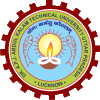In high mobility scenarios, the battery performance of wireless devices decreases due to an increase in power consumption, which occurrs from frequent handovers. therefore an energy efficient algorithm is suggested that chooses the optimal number of cooperative moving relays (MRs) from among several MRs deployed on the roof of the train in order to effectively use the transmit power n a NOMA based wireless network using HDAF MR and considering rayleigh fading environment. An energy efficient MR selection technique is suggested as a solution to the optimization problem, which is defined as the problem of energy maximization. When compared to the fixed MR based maximum ratio combining and selection combining diversity techniques, the simulation results show that the proposed algorithm improves the energy efficiency of both non-vehicular and vehicular users and lowers the outage probability at specific spectral efficiency. In order to maximize energy efficiency, this outcome will be helpful in vehicular communication. Both the analytical approach and the Monte Carlo simulation are used to analyze all of the results. The results obtained from various analysis of whole research work may be useful for deploying the MR for future fifth and sixth generation cellular networks to get better QoS.
Content Owner / Guide
Title
Mobility management in next generation networks
Year Awarded (Blank if Not Awarded)
2023
Type
Doctor of Philosophy
Place of Work
E-Mail
Roll No
Ph.D/19ECE/2462
Registration Date
Area of Research
Wireless Communication

